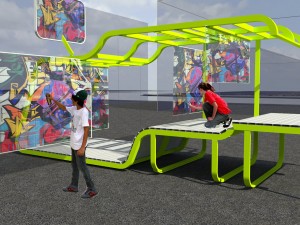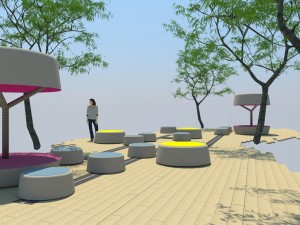Teen Art Park: A Place for Artistic Expression
- Public Policy
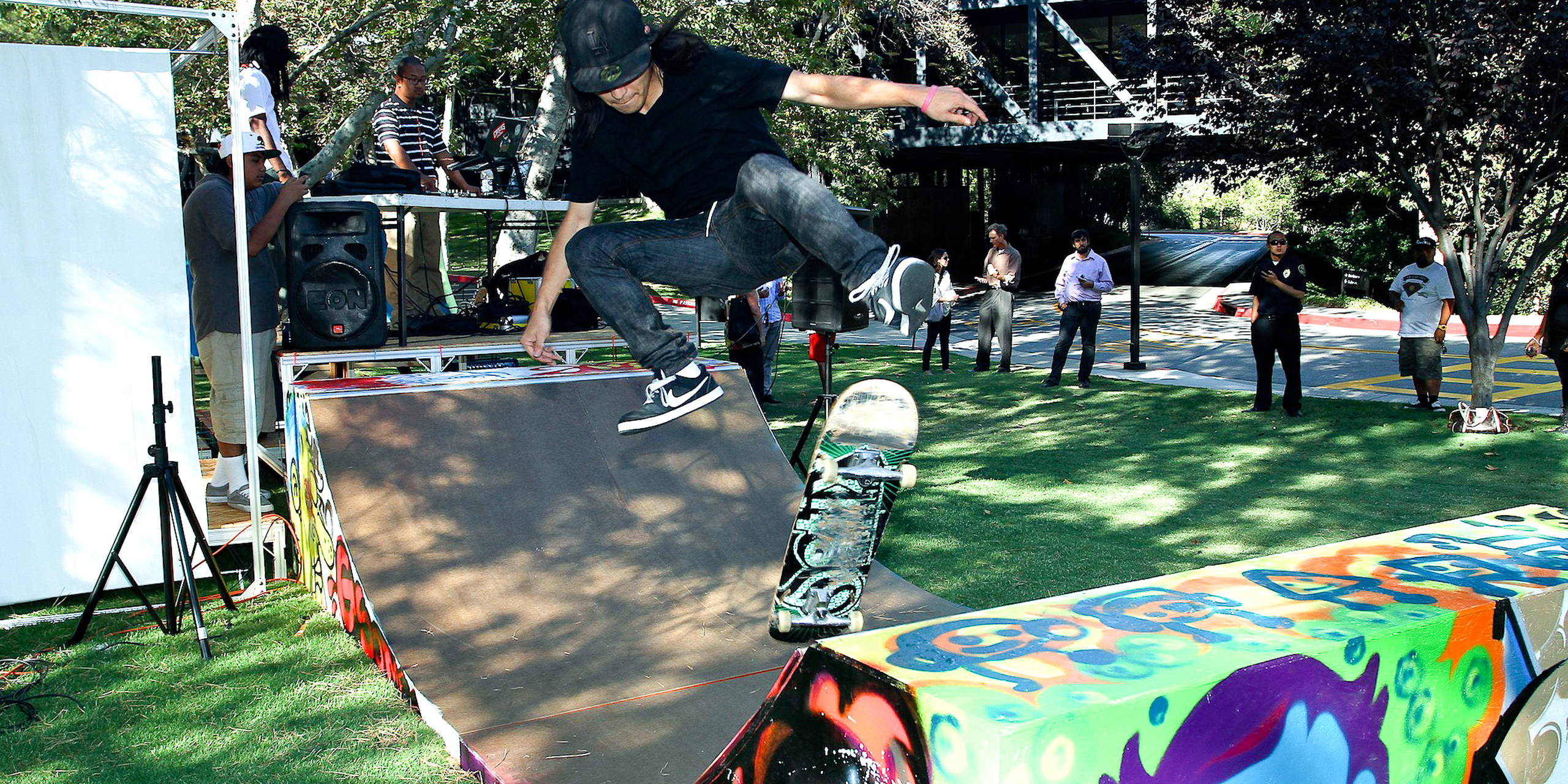
Spring & Summer 2011
In this two-term Environmental Design-led class, students addressed the day-to-day challenges and aspirations of greater Pasadena’s at-risk teenagers and set out to design an art park to foster safe, artistic expression.
This project is important because it touches really close to home. There is such a diversity of people that live in Pasadena; learning more about what these teens have gone through was an emotional and humbling experience for our students.
—James Meraz, Professor, Environmental Design
Background
Teenagers need a positive venue for self-expression, a place where they don’t simply escape from their problems, but are encouraged to deal with them through the arts. Given the chance to channel their negative emotions into positive ones through the canvas, the wall, paper, or a loudspeaker, lives are transformed and youth can not only visualize their potential, they can reach it as well. The Teen Art Park would give them that chance.
The number one thing in this project is that it’s not about you, it’s about the teens. You may like something but at the end of the day you have to consider, ‘will it benefit the teens?’ Everything about the space has to be about them and it has to be genuine.
—Breon Waters II, Student, Team ARTPAS
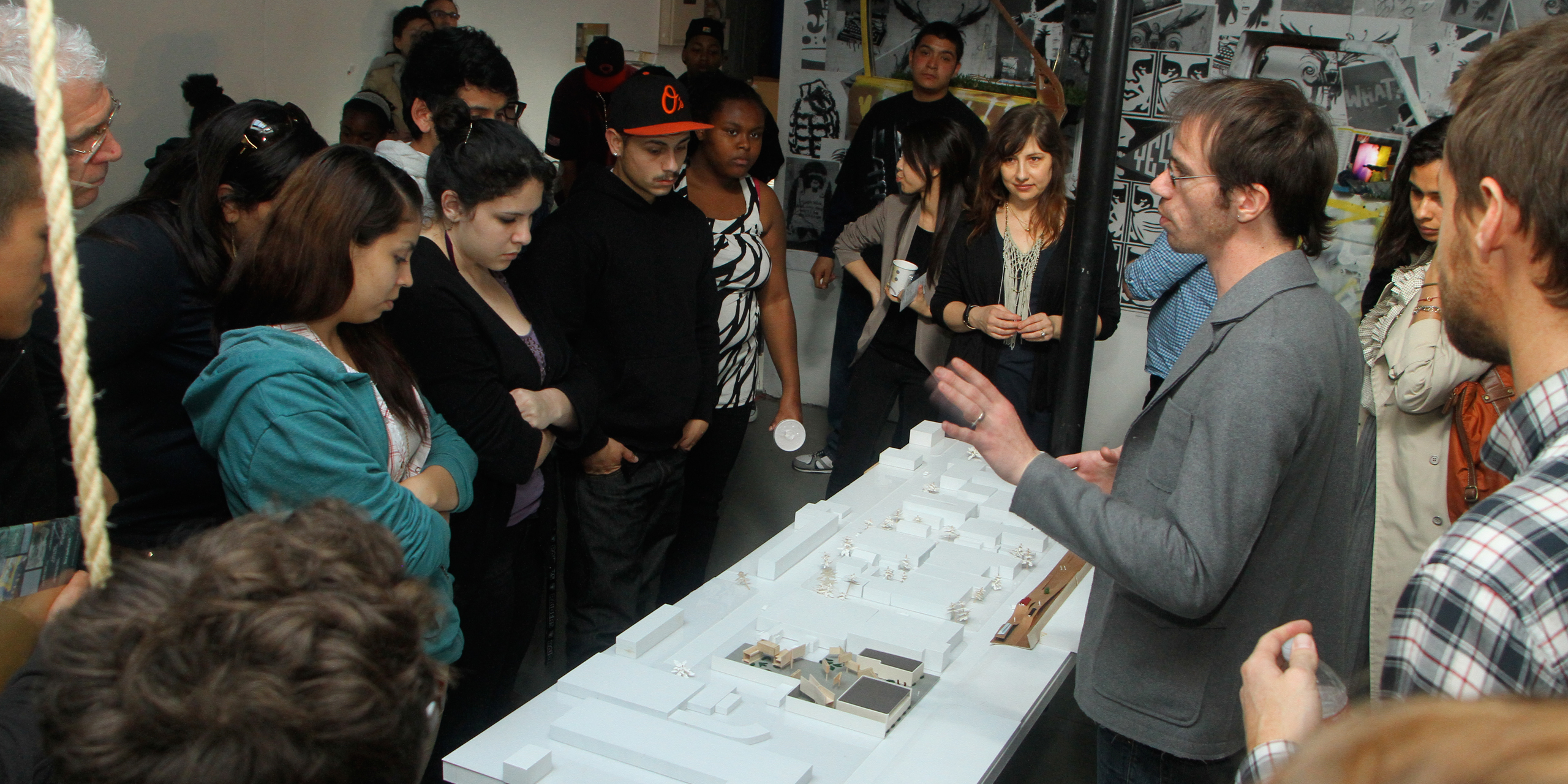
Beginning in 2010, an emerging need for an innovative arts center for Pasadena and Altadena’s at-risk youth was identified, and through months of conversation between community partners and Art Center, the vision for the Teen Art Park project developed. The Teen Art Park is envisioned to provide a safe environment for creative expression and human development for underserved teens; it would allow for mentorship toward creative careers, and it would provide a meaningful alternative to gang participation and other potentially destructive behaviors.
The twenty-nine community partners continued meeting and honing their ideas for a modular proposal that could be a magnet for disenfranchised community youth. These organizations included: Flintridge Center; the project initiator, Designmatters; the Armory Center for the Arts; Learning Works!, A Pasadena charter school serving at-risk youth; and Day One. At TAP (Teen Art Park) the teen artists could:
• Practice their crafts;
• Participate in workshops in a variety of arts, including music, visual arts, design, and performance;
• Use the space for performances and exhibits;
• Develop skill sets transferable to school and the workplace
• Form connections with community resources in the arts.
Throughout the first phase of the Teen Art Park studio in the Spring 2011 term, the students’ conducted human-centered, qualitative research, interviewed community service providers, and held workshops with at-risk Pasadena youth who articulated their hopes for what a Teen Art Park would bring to their communities. These conversations informed the projects in terms of what the Art Park might look like and include, how it be should configured and how to develop a sense of ownership among the target audience.
The studio’s second phase took place during the Summer 2011 term and kicked off with an event atOnyx Architects in which the students shared their park proposals with local teens and solicited their opinions on their projects’ direction. Based on the feedback from the teens and additional input from the community partner organizations, the students refined their initial designs and went to work constructing full-scale 20’x20’ modular prototypes that would provide a taste of what a Teen Art Park could bring to the community.
The Art Center students entered the project not only with a fresh sense of energy and a desire to show what could be done, but they also tried really to understand youth culture. They listened to our student’s wants and needs and built on them. And that is often hard to find. We’re so busy growing up as adults that we forget how much youth can teach us.
—Mikala Rahn, Founder, Learning Works! Charter School Program (LW)/ArtWorks
Design Brief
This transdisciplinary studio was comprised of small teams working to realize the class’ goal: to design an alternative and positive environment for youth from underserved communities in Pasadena. Through research, analysis and purposeful design they created proposals for park environments that supported self-expression, fostered creative skills, and reflected new ideas. With sensitivity to the needs of the individual as well as to group dynamics, the students built three dynamic full scale prototypes relevant to both the at-risk teens demographic and the community partners.
In their designs, the teams took into account several criteria— many provided to the students directly from the teens themselves— including the desire for the park to be a place for youth to learn from rising talent, that could become their mentors and role models.
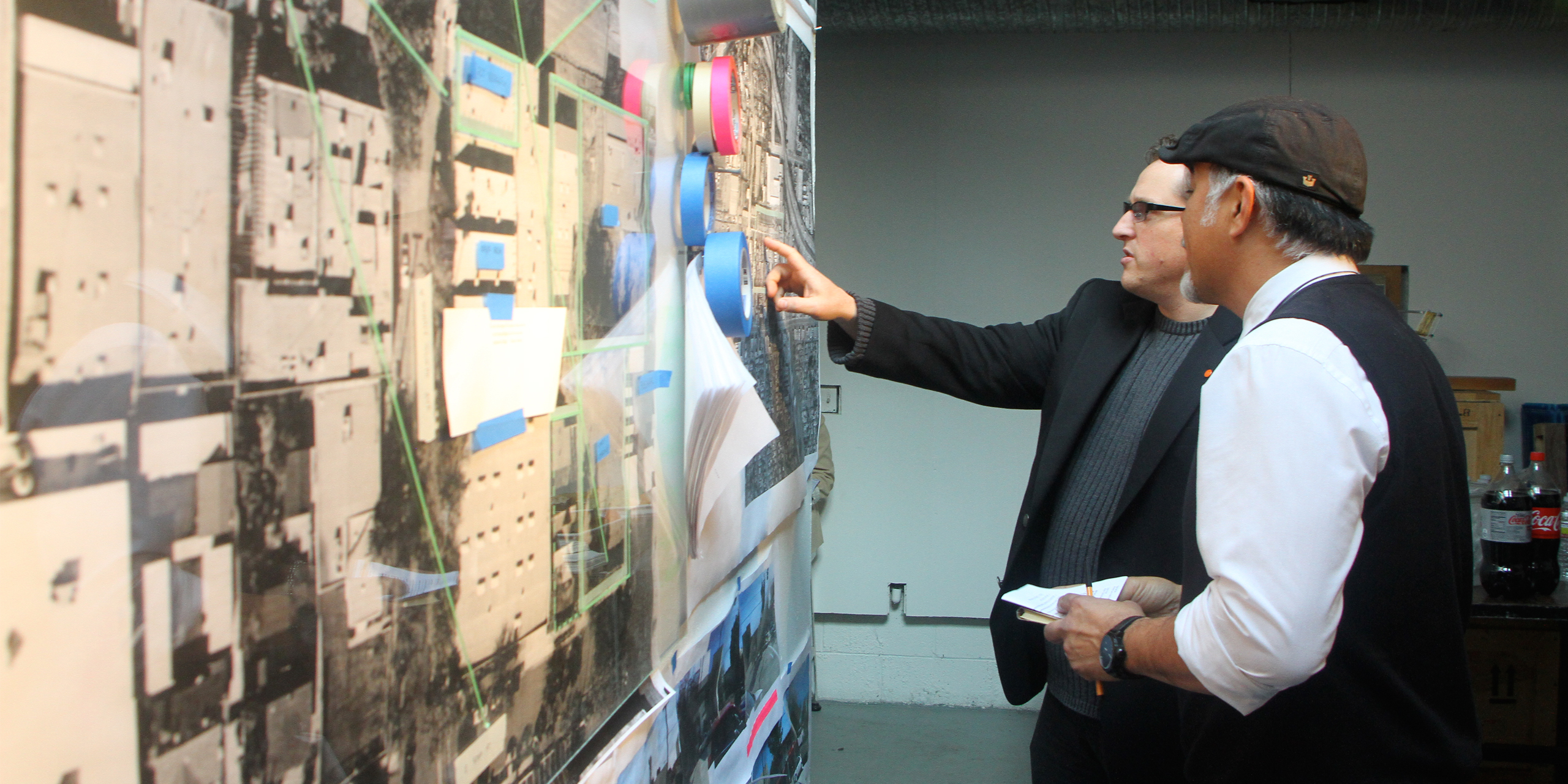
Environmental design is significant to the Teen Art Park project because it deals with creating the conditions necessary for a wide range of people to engage a social issue through art and dialogue, in a community oriented space.”
—Chris Adamick, Faculty, Environmental Design
Project Outcomes
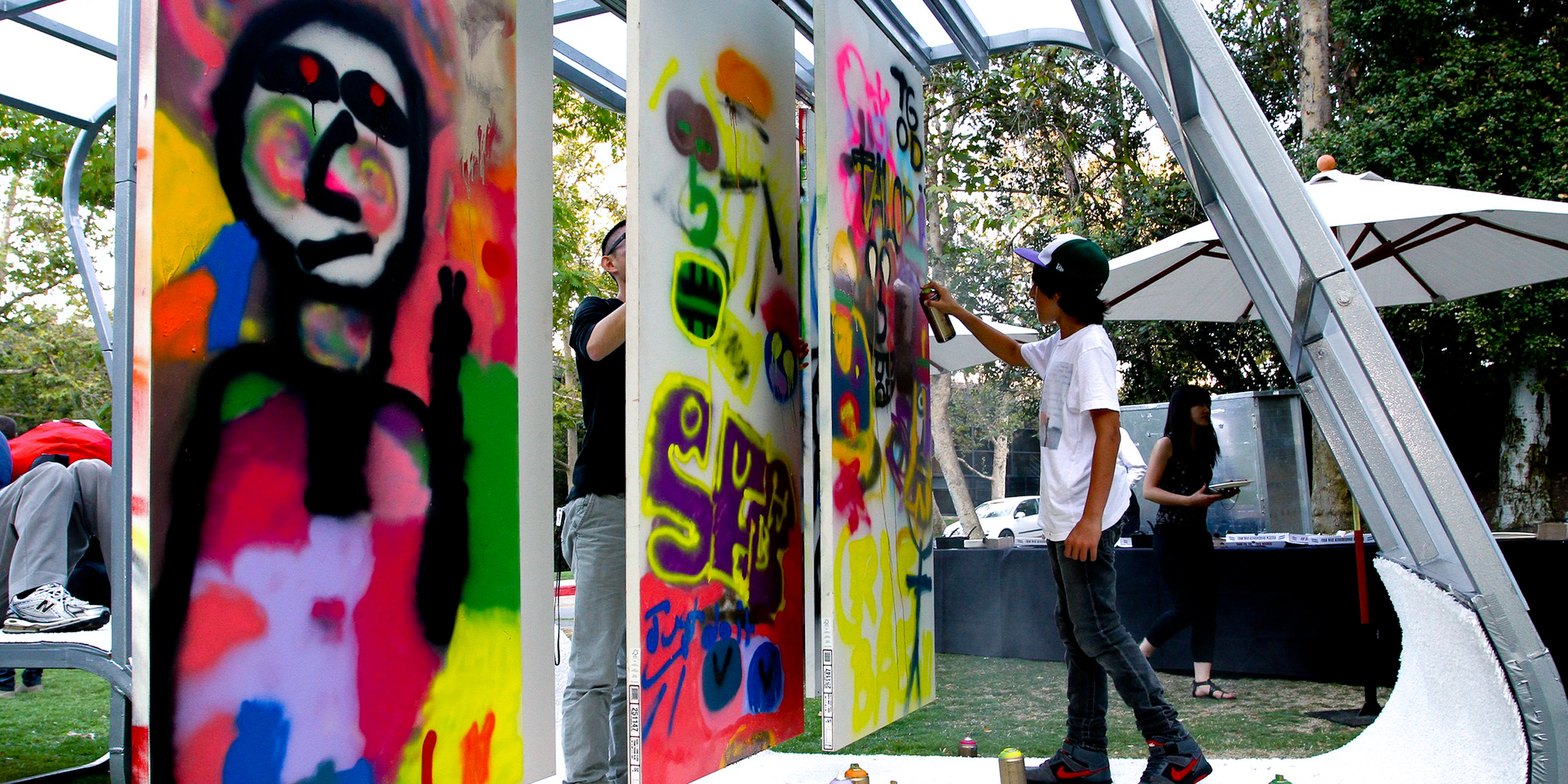 close
close
Team One: TEAM FREESOL
Read moreAnycia Lee and Evian Olivares.
Building community between teens was the focus for Team FREESOL’s design. Their belief that “art is social and social is art,” led to an exploration of the connection between teens, their art, their community and their sense of self. The intersection of all three influenced the design of an art park where street art provided a transformative canvas. One of Team Freesol’s main goals was to maintain the informal street feel of youth art culture while providing more formal spaces for teens to display their art. The teams initial design for the park contained areas devoted to individual studios— private, focused places that allow teens to concentrate on their own art— as well as unsanctioned, unprogrammed areas to give the teens the freedom to explore and create without restraint. Team FREESOL included mural blocks for displaying artwork, a grass field to serve as a public square, an open-air cafe with fire pit and an undulating path that would run the entire length of the park and perform double duty as an art walk— where the talent and individuality of the teens could be showcased— and as a walking path. Additional programs envisioned included: “the Tunnel,” an educational introduction to the park, a sculpture garden, and “Up and Down” elevated pathways to allow for, and encourage, new perspectives, and would end at personal studios and classrooms where workshops could be held. FREESOL was also interested in inviting the community to participate in the park, so their original designs called for the street to be activated via the strip of land adjoining the park, Team FREESOL invited the community to participate in the park and the teens to participate in life outside the park, as well inside it. When the focus of the class shifted from designing a site-specific space to building a full-scale 20’x20’ modular prototype, FREESOL decided that their main focus needed to be creating a safe, welcoming environment where teens could enjoy being themselves and discover ways to turn what they already love doing into a money-making endeavor. In the end, their site included a basketball hoop, an elevated platform for relaxation and hanging canvases that could be rolled out of the structure, painted on and then removed for display elsewhere.
 close
close
Team Two: ART PAS
Read moreAdam Patrick Easter Cottingham and Breon Waters II
The central idea behind ArtPas’ Teen Art Park project was defined as: “A place to chill, a place to be heard, a place to grow.” It was envisioned as a new kind of creative space for teens, one that looked at specific issues “pressing down” on adolescents today: censorship, gangs, and teen pregnancy. The art park as imagined by ArtPas would serve as both a support structure and second family. Team ArtPas’ approach to the project began by posing two critical questions: How do we create a place where people feel they belong? How can we create an environment where conversations can take place and people will work together? Research provided some answers regarding the vital benefits of play and the psychological effects of color–teens react more to shocking colors. The group incorporated research and ideas regarding the role of space to facilitate creativity. What they came away with was a concept for a park that utilized a diversity of physical areas for a broad range of uses: art, performance, and “chill spots,” which are places to unwind and allow for un-programmed time. Another important aspect of the design process was creating a space where the teens felt comfortable and at home. They wanted the Teen Art Park to be a place that they could call their own. Shipping containers to create niches were envisioned, as was a central “urban tree” that, acting similarly to the communal “big oak tree” in rural settings, could display art and act as a focal point for meeting, relaxing, thought and storytelling, a billboard jungle that would provide a giant canvas for artistic expression, an art gallery, a moveable garden, mobile platforms to re-organize space, and privacy screens made of reeds to give respite from the world. After weighing additional feedback from teens, partners and their instructors—and after adjusting their plans from creating a site-specific structure to a smaller and more mobile modular system—the team designed and built what they called a “miniature urban fun zone,” built around a miniature half-pipe for skateboarding, billboards for spray-painting and a row of lounge chairs for relaxation. The Teen Art Park, as imagined by Team ArtPas would provide the familiar and welcome the unfamiliar, and be a place where people could step out and grow.
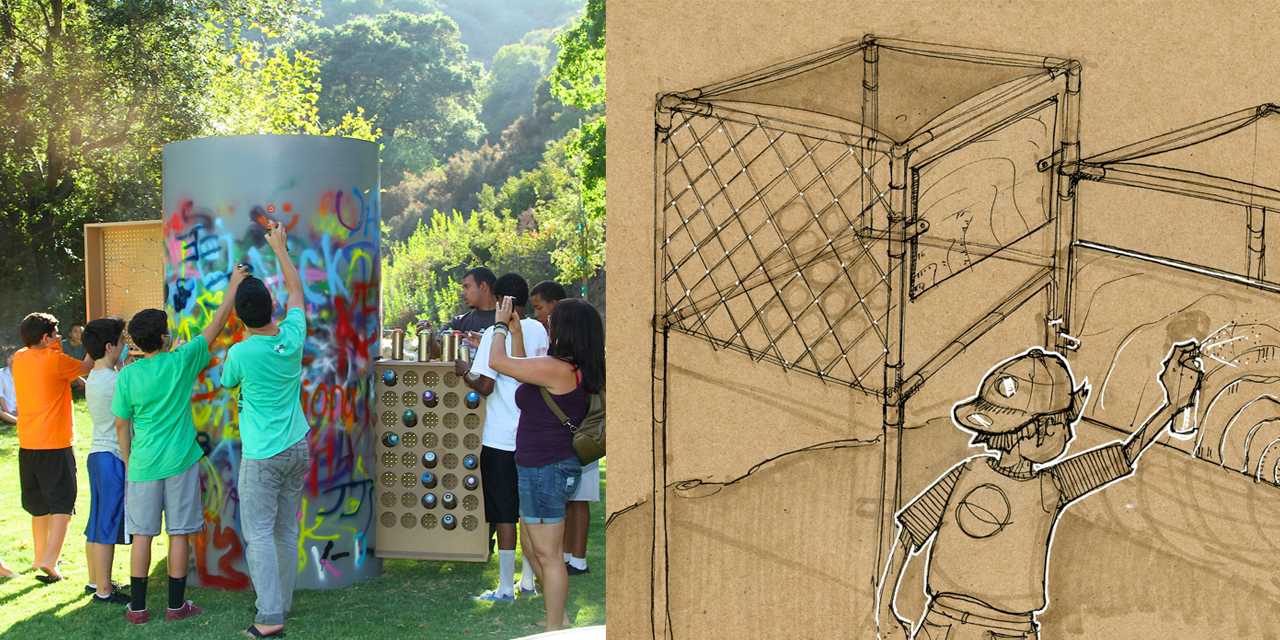 close
close
Team Three: TEAM HUB
Read moreSeth Baker, Hugh Chuang and Thomas Kong.
The desire to create an organic space that could meet teens wherever they are informed The Hub’s initial explorations. From the very beginning, their project centered around a modular system that could constantly change, much like the teens for whom they were designing. To create an adaptable park filled with places that teens could choose to either escape to or actively engage with, The Hub took inspiration from D.I.Y. and Lo-Fi culture and envisioned a “cross-over” environment that would fuse natural and man-made elements. Their initial designs for the park called for a green space, a space for artistic expression, a space to present art and unwind, a family area for teen moms to play with their children and, perhaps most importantly for teen development, “undefined spaces.” Team HUB originally envisioned the park being divided into three sections: the front of the park would be geared towards teens and act as a place for artistic expression; the park’s versatile center, aka “The Grid,” would serve as a place to display art, to unwind and as an area for families and teens to interact, thus serving as a bridge between different demographic groups within the community; and the back of the park would play host to a family area, including a playground for teen moms and neighborhood children. The plan also held the possibility of a graffiti wall that would serve as a first introduction to art, as well as a way to elicit the teen voice, allowing it to be expressed clearly, freely and with tolerance. As the parameters for the park shifted and the class switched from conceptualizing a site-specific structure to building a full-scale modular prototype, the team members found themselves needing to distill their project’s ideas down its most critical elements. Once they did this, they realized their most important goal was to give at-risk teens a space where they could defy societal expectations. To reinforce this concept, The HUB focused on incorporating everyday objects in new and unexpected ways, most dramatically exhibited in its usage of foam swimming pool noodles to create a topography for relaxing, as well as the large cylinders that do quadruple duty as lounge chairs, spray paint storage units, paintable surfaces and a “boom box” of sorts for MP3 players. Through its use of unexpected materials and objects and its focus on giving teens a space that they can inhabit and take over, the Teen Art Park, as envisioned by The Hub, would allow youth to both express themselves, to relax among their peers, and to re-imagine their possibilities.
The Teen Park we envisioned is one that would be a place of transformation, where you could become the best version of who you can possibly be.
—Adam Patrick Easter Cottingham, Team ArtPas
Implementation
Following the conclusion of the second studio, semi-permanent homes within the context of the project partners’ facilities (such as indoor lounge and exterior courtyard areas) were found for the various structural components of the design prototypes and deployed across various locations in the city of Pasadena. After a period of approximately six months of testing of the modular structures by teens and partners, in Fall 2012, Designmatters convened an independent study seminar directed by Professor James Meraz, the principal investigator of the project, with a sub-set of students who were committed to seeing their proposals go forward to a manufacturing and implementation-ready stage. This final design process included a rigorous phase of iteration based on new feedback and insights collected from users and partners that addressed considerations of durability, mobility of the structures, and cost. At this writing (spring 2013), the following designs are included in an executive report developed by the Designmatters Department that lays out a set of recommendations for the project partners to take forward the proposed designs as the continuing policy work to designate a possible site for the Teen Art Park unfolds in the City of Pasadena. The three projects that fully developed in this final phase are:
Lead designer: Anycia Lee
Freesol Graffiti Lounge is a transformative structure for creative self-expression that includes a lounge area, a performing stage and detachable painting boards for graffiti and art making.
Lead designer: Adm Patrick Easter Cottingham
The over-size chair concept is a sturdier and more flexible iteration of the original piece that resulted from the second phase studio. The chair structure is now made of steel; it includes a light-weight customizable mesh material for the seating area and wheels for ease of mobility and flexibility in seating configurations.
Lead designer: Seth Baker
Hub is a system of components that can be layered onto a wide array of landscapes and public spaces ranging from parks to courtyards and commercial malls. The system includes “boom tubes” an umbrella-like seating area that is designed to amplify sound and encourage music listening, as well as “parked-stools” and “roller-stools,” seating areas that can take on moving and permanent configurations depending on the setting.
Without partnerships and collaborative endeavors we wouldn’t be able to create the types of programs and projects that truly benefit the community, in this case, teens. Solid, committed partners, who share a commitment to youth and a belief in the mission, helped move the Teen Art Park toward fruition.
—Brian Biery, Flintridge Center
The students have taken what was a notion and turned it into an authentic possibility. That’s enormously exciting. Part of what’s happened here is getting people and groups together that otherwise wouldn’t have any interaction at all. The wild ‘blue sky’ possibilities that are envisioned here have real substance, and they have a real possibility of making a long-term difference for Pasadena.
—Scott Ward, Executive Director, Armory Center for the Arts
Book
-
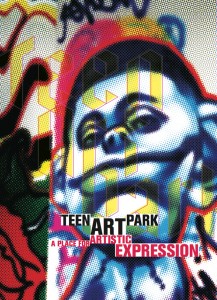
-
Teen Art Park
The Teen Art Park Book, chronicles the two-term Environmental Design-led class, in which students addressed the day-to-day challenges and aspirations of greater Pasadena’s at-risk teenagers by designing an art park to foster safe, artistic expression.
Published by Designmatters
Download PDF
